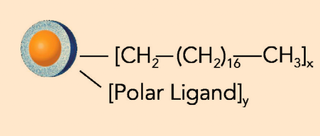Can your stationary phase be used under 100% aqueous conditions?
What does it mean when a stationary phase is completely wettable? Let's take the HALO® AQ-C18 as an example. This phase can be used under 100% aqueous conditions without loss of retention time when the pump is restarted after stopping.
Since the stationary phase is mainly located in the pores of the particles, most of the interaction that contribute to retention take place here. A small pore size and a very hydrophobic stationary phase, such as the C18, make it difficult for 100% aqueous mobile phases to enter the pores.
When the pump is stopped and the column is no longer under pressure, the 100% aqueous mobile phase withdraws from the pores. When the pump is restarted, the mobile phase is no longer able to wet the pores and the retention of the analytes is reduced.
To rewet the pores, it is best to use a combination of water and organic mobile phase. This ensures that the retention is the same as before the 100% aqueous mobile phase left the pores.
If a stationary phase is not fully wettable, the reproducibility of retention times for early eluting compounds may suffer if the gradient contains little or no organic components.
With a 100% wettable phase like the HALO® AQ-C18, the problem of retention loss does not exist. This is a great advantage when analysing samples such as metabolites containing polar analytes, as the starting gradient can be 100% aqueous.
HALO® AQ-C18-Phase
The HALO® AQ-C18 phase is ideal for use with highly aqueous mobile phases in reversed phase chromatography, especially when compared with the hydrophobic HALO® C18 phase, which is dewetted when used with a 100 % aqueous mobile phase.
An aqueous environment can offer many separation advantages especially for highly polar compounds.
This makes the HALO® AQ-C18 column ideal when analysing organic acids such as ascorbic acid, citric acid and lactic acid. These compounds are very polar, which necessitates working with a highly aqueous mobile phase.
